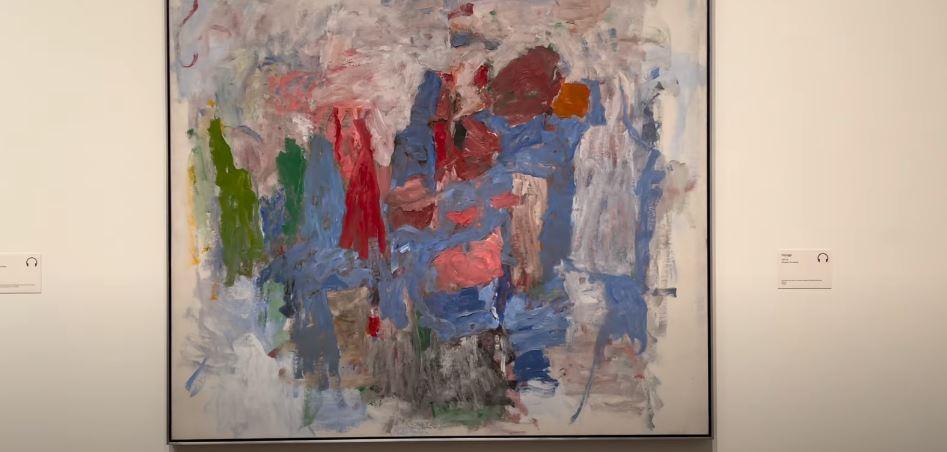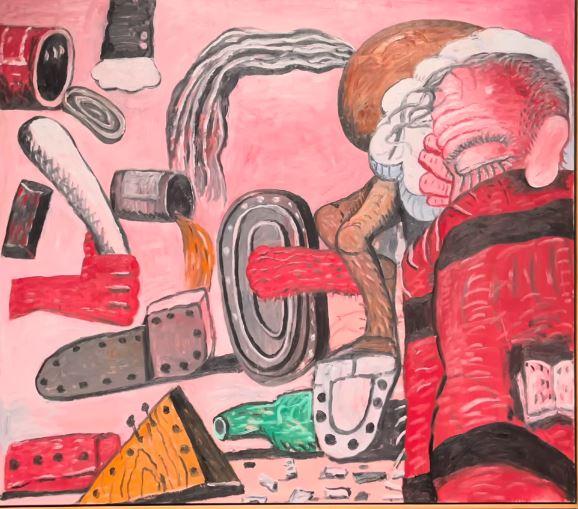
Philip Guston’s Tate exhibition offers a profound journey into the artistry of one of the 20th century’s most intriguing painters. With a career spanning over 50 years, Guston’s work reflects the tumultuous and ever-changing world he inhabited.
Born in Canada to a Jewish immigrant family and raised in the United States, Guston emerged as a prominent abstract painter alongside luminaries like Mark Rothko and his childhood friend Jackson Pollock.
Guston’s early works grappled with societal issues, addressing racism in America and the turmoil of wars abroad. However, the late 1960s marked a turning point as he grew critical of abstraction during a time of significant social and political upheaval.
This led to the creation of large-scale paintings featuring comic-like figures, some adorned with white hoods symbolizing evil and the everyday perpetrators of racism. This departure from abstraction solidified Guston’s status as one of the late 20th century’s most influential painters.
The current retrospective at Tate Modern is a testament to Guston’s complexity, showcasing how his art bridged the personal and the political, the abstract and the figurative, the humorous and the tragic.

It is the first major retrospective of the artist in the UK in nearly two decades, co-organized by Tate Modern, the Museum of Fine Arts, Boston, the National Gallery of Art, Washington, and the Museum of Fine Arts, Houston.
The exhibition’s arrival in Britain was not without controversy, delayed after the murder of George Floyd and accompanied by warnings.
The showcased works include Guston’s provocative depictions of Ku Klux Klansmen, portraying them in a cartoonish and satirical light. The artist’s shift to this late style in 1970, marked by pointed social commentary, stirred up significant criticism. The paintings were labeled “simple-minded” and Guston faced accusations of being a “mandarin pretending to be a stumblebum.”
Guston’s cartoonish renderings of everyday objects and his satirical take on hate groups resonate even more strongly today. The exhibition prompts viewers to reconsider his later works, which have become better known than his earlier abstract pieces. It invites us to read his progress backward, appreciating the clues in his abstract works that foreshadowed his later, more explicit social commentary.
The artist’s biography sheds light on the factors that influenced his art. Born as Phillip Goldstein in 1913 in Montreal, Guston’s family escaped persecution, settling in Los Angeles in 1922. Tragically, his father’s suicide in 1923 left a lasting impact on the young artist.
Guston’s self-taught journey included studying under Mexican muralists David Siqueiros and Diego Rivera. His early activism is evident in murals supporting the Scottsboro Boys Trial defendants, highlighting his commitment to social justice.
As Guston moved into abstract expressionism, he achieved success in the 1950s. His art, characterized by gestural strokes and color blocks, positioned him as a key figure in the New York School. However, by the 1960s, he grew disillusioned with abstraction, leading to a radical shift in style. The return to figurative art in a cartoonish manner became a hallmark of his late career, culminating in the Marlborough Gallery exhibition in 1970.
The controversy surrounding Guston’s late works, particularly his depictions of Klansmen, highlights the enduring relevance of his social commentary. Despite initial criticism, Guston’s legacy endures as one of the most important and influential American painters of the last century. His lexicon of images, including Klansmen, light bulbs, shoes, cigarettes, and clocks, became a powerful means of conveying his perspectives on contemporary issues.
The Philip Guston Tate exhibition provides a nuanced exploration of an artist who fearlessly responded to the challenges of his time. Guston’s ability to navigate the intersection of personal expression and societal critique is a testament to the enduring power of art to provoke thought and reflection.
Guston’s later paintings, often filled with commonplace objects and remembered imagery, serve as a rich tapestry of his thoughts and observations. The recurring elements, such as the ever-present cigarette, bulging eyeballs, and steaming kettles, contribute to a visual language that speaks volumes about the artist’s concerns. His paintbrushes, depicted as nasty implements taken to bed, and half-squelched tubes of paint are symbolic of the artistic process and the struggles embedded within it.
The complexity of Guston’s later art lies in its ability to juxtapose crude and lumpy objects with tenderness and delicacy. His portrayals of severed feet, clenched fists, and ominous clocks create a lexicon of symbols that convey a sense of urgency and foreboding. One cannot escape the impact of these memorable and indigestible images, each laden with meaning and a profound sense of the human condition.
The exhibition at Tate Modern offers a chronological journey through Guston’s life and art, allowing viewers to trace the evolution of his style and the thematic continuity that underlies his diverse works. From his early years as Philip Goldstein, navigating the challenges of immigrant life in Montreal and Los Angeles, to his exploration of muralism and activism in the 1930s, the exhibition provides a comprehensive view of Guston’s formative experiences.
His journey through the WPA program during the Great Depression, his experimentation with abstract expressionism in the 1950s, and the subsequent shift to neo-expressionism in the 1960s and 1970s all contribute to the rich narrative of Guston’s artistic odyssey. The exhibition contextualizes his transformation from a celebrated abstract expressionist to a polarizing figure unafraid to confront societal ills head-on.
Guston’s incorporation of political themes, such as racism, antisemitism, fascism, and American identity, is particularly evident in his later, more cartoonish works. The portrayal of Klansmen becomes a satirical exploration of evil, a deliberate attempt to understand and confront the darker aspects of human nature. His self-portrait as a Klansman painter engaging in a self-portrait adds layers of complexity to these provocative pieces.
The delay in bringing this retrospective to the UK, fueled by concerns and controversies, only underscores the relevance and potency of Guston’s work. The exhibition, now accompanied by warnings, challenges viewers to confront uncomfortable truths and engage in a nuanced dialogue about art, society, and the artist’s role in provoking critical discourse.
In summary, the Philip Guston Tate exhibition stands as a testament to the enduring power of art to transcend boundaries and provoke meaningful conversations. Guston’s art, spanning a tumultuous period of history, reflects not only the personal evolution of an artist but also the broader socio-political shifts that shaped the 20th century. As viewers navigate through the various phases of Guston’s career, they are invited to witness the profound impact of an artist unafraid to challenge conventions and use his craft as a lens to explore the complexities of the human experience.




